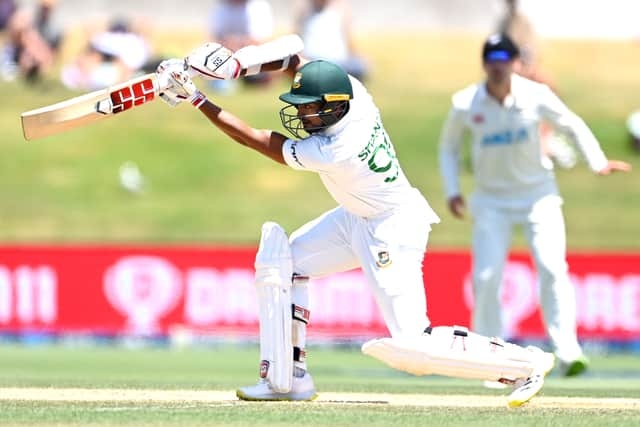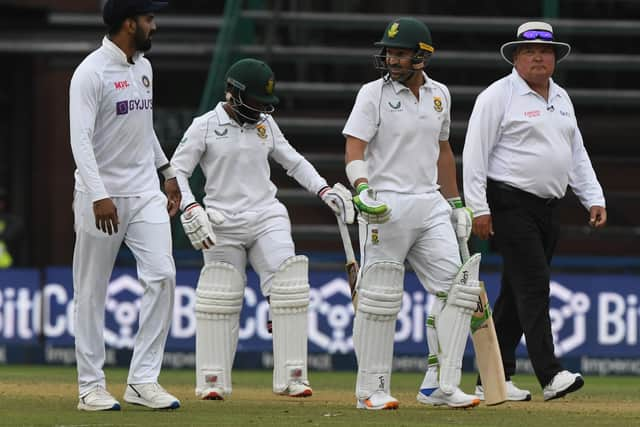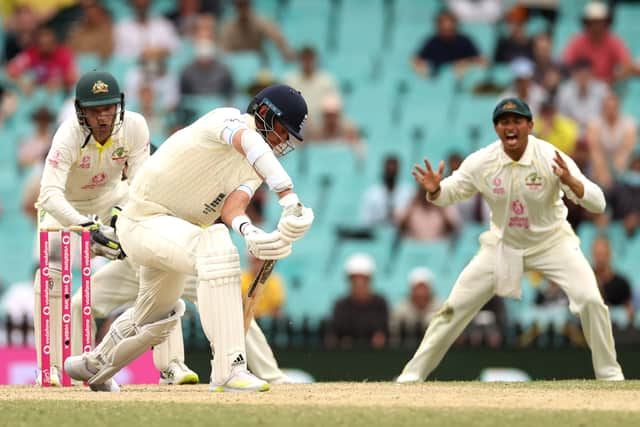Why the first week of 2022 has shown that rumours of Test cricket’s death have been greatly exaggerated


The talk over the winter has been that Test cricket is in poor shape.
Citing England’s appalling series in Australia as a prime example of how the white ball game is killing the red ball format has been a regular activity for many on social media for several weeks now.
Advertisement
Hide AdAdvertisement
Hide AdAlthough there are plenty of arguments to say this is true, the point that Test cricket is dying has been put to the sword in three contests around the world in the first days of 2022.
Bangladesh stun New Zealand


In New Zealand, Bangladesh were given little of getting anything from their visit to Mount Maunganui.
The Black Caps star studded lineup were expected to make light work of the touring Tigers, that was until they took a 130 run advantage into the second innings.
Most pundits and fans would still have tipped New Zealand to score big the second time around, yet it wasn’t to be.
Advertisement
Hide AdAdvertisement
Hide AdEbadot Hossain ripped through the New Zealand batting order, putting his name on the cricketing map with his 6–46.
The hosts were stunned as they crumbled to 169 all out and the tourists needed just 40 runs to seal a famous win.
With bat and ball, Bangladesh were outstanding and thoroughly deserved to claim arguably the biggest ever win as a test playing nation.
Huge upsets are few and far between in test match cricket, but this one will be up there for years to come and kick off 2022 in style.
South Africa seal victory in tight affair against India


Advertisement
Hide AdAdvertisement
Hide AdThree days into the new year, South Africa faced off with India in Johannesburg. India won the first test comfortably, rounding off an excellent year for them with the red ball.
On home turf, South Africa would have been keen to bounce back.
What followed over the next four days was a close contest, with both sides matching the other with bat and ball.
India’s 202 all out looked below par, that was until their bowlers fought back to restrict their hosts to just 229. Shardul Thakur stole the headlines with his 7/61.
Advertisement
Hide AdAdvertisement
Hide AdCould India push on and set a big, 300+ target to help them wrap up the series? Not quite.
The South African bowlers fought back and restricted India to setting them a target below 250.
South Africa had more than enough time to reach the target, but even a straightforward target can be made harder on an older pitch.
Yet the hosts kept their head and, led by opener Dean Elgar who finished unbeaten on 96, they navigated their way to 243–3 to wrap up a hard earned, low scoring victory.


Advertisement
Hide AdAdvertisement
Hide AdThe Fourth Ashes test in Sydney showed in five days why there is no such thing as a dead rubber in one of sports greatest rivalries.
Going into the final day, England had 10 wickets in hand and required over 350 runs for victory.
They needed to bat long and hard to prevent a fourth straight defeat in a series to forget.
For a while, it looked as though the game would teeter out into a tame draw. However, tame draws aren’t something England do.
Advertisement
Hide AdAdvertisement
Hide AdWickets came at regular intervals for Australia and when Jack Leach edged behind England were nine down and teetering on the brink.
James Anderson was surrounded by Australians as he faced up to Steve Smith bowling the final over and each delivery brought with it it’s own wave of tension.
With just a single ball of the match, some England players couldn’t bear to look, but stalwart Anderson blocked out the delivery and sealed a gutsy, gritty draw for this side.
The match did nothing more than give the English players a sense of pride and although the damage had been done before the New Year, the performance at Sydney was a prime example of how to dig in and fight for a Test match draw.
Advertisement
Hide AdAdvertisement
Hide AdThese three Test matches have all been completed within the first 10 days of the new year.
They are examples of how the drama and tension of the five day game can keep anyone gripped, no matter what the score in the series is.
Groans about the slow death of Test cricket come around on an almost yearly basis in the modern game, but if we continue to see more gripping contests like the ones we have seen in Mount Maunganui, Johannesburg and Sydney, then the more argument there will be that Test cricket is far from the lame duck so many make it out to be.
Comment Guidelines
National World encourages reader discussion on our stories. User feedback, insights and back-and-forth exchanges add a rich layer of context to reporting. Please review our Community Guidelines before commenting.
